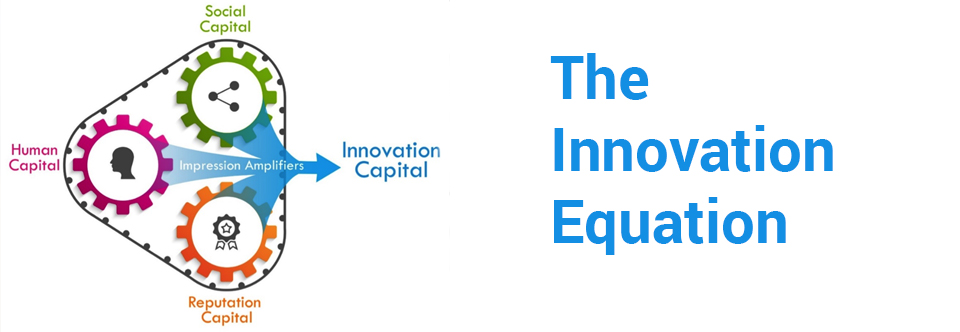One of the interesting cultural elements of many of the technology companies I have worked with has been network leadership. No matter whether you are a newly minted graduate or a seasoned professional, these tech-driven, high energy companies rely on individual, group, management and executive leadership to succeed.
But obviously, this also comes with challenges. Risks. After all, you never become a leader unless you develop a level of risk tolerance.
Jeff Dyer and Nathan Furr have been studying innovation capital and what it takes to grow yourself and your company from a leadership perspective. Unsurprisingly, they focus their attention firstly on you – the leader:
Innovation capital begins with innovation skills. If you can’t figure out how to successfully lead an innovation initiative, you will never build a track record for innovation among your social connections or a broader community. So it starts with you—and what management scholars call your “human capital.”
But as they delved deeper, they identified two key skills:
-
- Forward thinking: Casting your vision into the future to understand the trends, opportunities and challenges that are beyond our usual time horizon.
- Proactive problem solving: This means relentlessly pursuing problems and challenges in order to solve them. Just make sure that these are problems worth solving.
These are essential components of what I call the entrepreneur mindset – but I do like the three dimensions that Dyer and Furr have described:
Social Capital + Human Capital + Reputation Capital = Innovation Capital
This “innovation equation” explains why innovation is hard work. Not only does it require you to activate your business and personal networks (social capital), innovation needs to be supported by your ability to rally others (human capital) and connect your personal reputation (expertise, know-how, willingness/risk) – all in pursuit of your vision. It requires determination and a certain ability to keep many things happening at once.
The good news is that much of this can be learned. As leaders we can take on new challenges outside of our comfort zones. We can reignite our networks – from Twitter to LinkedIn right down to our local communities there are pathways to activate and people to engage – and the more we do, the more powerful our networks will become. And finally, we can bring our reputation to bear on a challenge – leaders can endorse emerging technologies or projects, volunteer with an NGO or advise a startup.
Remember, it’s not just about a straight line between you, your business, your customer and your vision. Connect dots, support new players, have coffee with a competitor. You never know where the innovation equation may take you or the results you might achieve.
Nina Nets It Out: The next generation of leaders are finding that the path to innovation is not as straight forward as it once was. These days we need to find new methods to create value – and the innovation equation may prove to be a winning formula.
